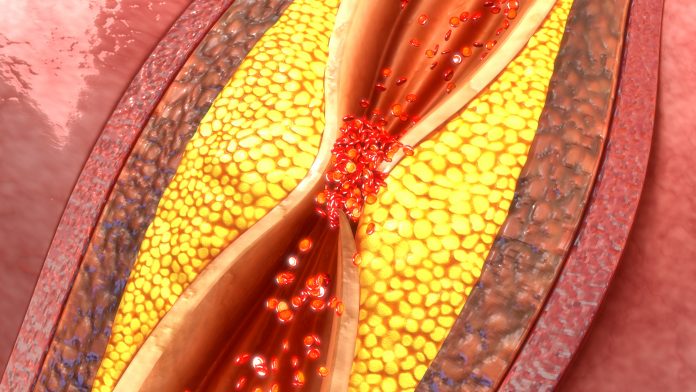
New research conducted at Madrid’s Centro Nacional de Investigaciones Cardiovasculares (CNIC) suggests that young people are more susceptible to the effects of risk factors for developing atherosclerosis—the hardening and narrowing of arteries due to the accumulation of plaque. The study, co-led by Valentín Fuster, MD, PhD and Borja Ibáñez, MD, PhD, emphasizes the vulnerability of younger individuals to the damaging effects of elevated blood cholesterol and hypertension, two major modifiable cardiovascular risk factors.
The study, published today in the Journal of the American College of Cardiology, suggests healthcare providers should take a more aggressive approach to controlling these cardiovascular risk factors for this patient population. This would include a shift in primary prevention strategies, the researchers noted, to incorporate “surveillance of subclinical atherosclerosis and early cardiovascular risk factor control.”
Fuster, CNIC general director and physician-in-chief at Mount Sinai Medical Center, stresses that screening for subclinical atherosclerosis from an early age, combined with aggressive risk-factor control, could help reduce the global burden of cardiovascular disease.
The study, named PESA-CNIC-Santander (Progression of Early Subclinical Atherosclerosis), launched in 2009 in collaboration with Santander Bank. The research was conducted with a cohort of more than 4,000 apparently healthy middle-aged Santander Bank employees in Madrid who volunteered for a thorough, noninvasive analysis of their carotid, femoral, and coronary arteries, as well as the aorta. The researchers also collected blood samples for advanced genomic, proteomic, and metabolomic analyses.
The study’s central finding is that moderate increases in blood pressure and cholesterol have a more pronounced impact on atherosclerosis progression in younger individuals.
This suggests that the control of risk factors, particularly elevated cholesterol and hypertension, should commence early in life when arteries are more vulnerable to their effects. Ibáñez noted that “in this study, we show that moderate increases in blood pressure and cholesterol have a much more pronounced impact on atherosclerosis progression in younger people.”
Guiomar Mendieta, first author on the study, added that atherosclerosis, previously considered irreversible, can disappear if risk factors are controlled from an early stage. This discovery challenges conventional beliefs and is attributed to the meticulous collection of imaging and biochemical data over six years, coupled with an innovative statistical analysis by the investigators.
The investigators pointed out there were some limitations in the research, notably that it was conducted in mainly European/White, middle-aged workers, “and thus the generalizability of our findings should be considered with caution.” Also second, we have found that the effect of higher baseline LDL-cholesterol and SBP (systolic blood pressure) on the progression of [subclinical atherosclerosis] over a six-year period was more marked at younger ages, but because we lack participants’ LDL-C and SBP values before study enrollment, we cannot ascertain whether our baseline measurements reflect persistent levels from earlier ages.”
However, despite these limitations, the researchers concluded: “The impact of baseline LDL-C and SBP on SA progression was more pronounced in younger participants. These results suggest that tighter risk factor control at younger ages can prevent atherosclerotic progression, with a likely long-term impact on reducing the risk of clinical events.”













